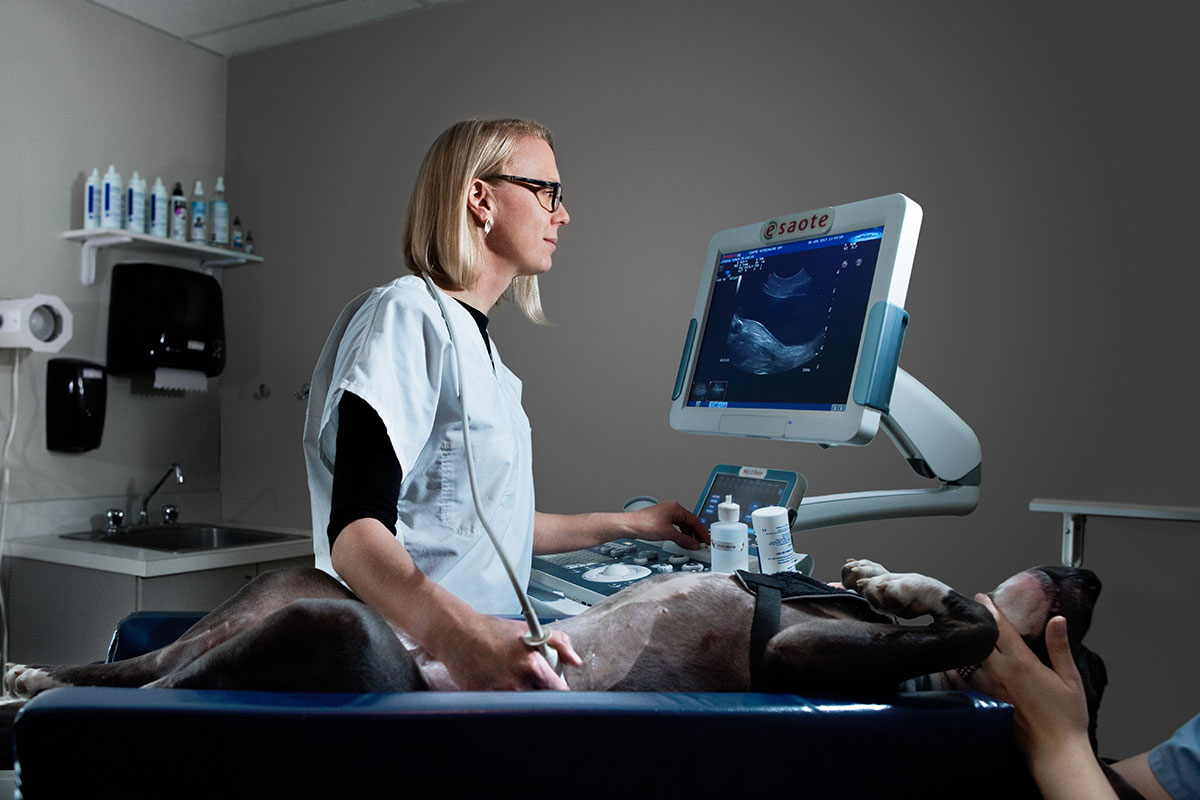How We Do It
We lead the fields of veterinary radiology and radiation oncology through consultation, education, and innovation
We lead the fields of veterinary radiology and radiation oncology through consultation, education, and innovation

Dr. Kate Alexander, Center DMV, Montreal
Veterinary radiologists consult with other veterinarians on best imaging practices, including way to optimize image quality and maintain radiation safety. A radiologist has extensive training in five diagnostic imaging modalities (see Types of Imaging & Therapy) and can guide veterinarians and pet owners on which of these tests is ideal for a given symptom. Once the images are obtained, the radiologist generates a report detailing the diagnosis as it relates to the patient’s symptoms.
Veterinary radiation oncologists work directly with pet owners and other veterinarians to treat cancer using radiation. A radiation oncologist has extensive training in medical physics and cancer biology to determine what diseases will respond best, whether the goal is for slowing the progress of a tumor or for a complete cure.
We educate students, practicing veterinarians, as well as the public on how radiology and radiation oncology are used in veterinary medicine. As the field of veterinary medicine expands to mirror the vast options available in human medicine, specialists are tasked to be professors at universities, providers of continuing education, and public advocates for the profession.
Veterinary radiologists and radiation oncologists expand our current knowledge and options by developing new tests and treatments, some of which bridge the gap between human and veterinary medicine. The journal, Veterinary Radiology & Ultrasound, serves as our primary peer-reviewed journal.
Find out more about the equipment (modalities) we use in our research and clinical practice.